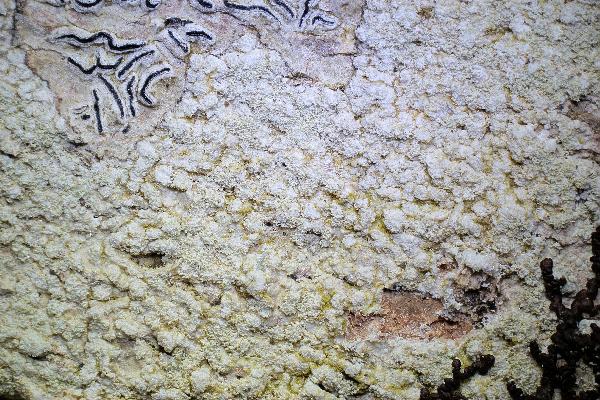Chicitaea cristinae (Guzow-Krzem., Łubek, Kubiak & Kukwa) Guzow-Krzem., Kukwa & Lendemer
Mycokeys, 102: 169, 2024. Basionym: Loxospora cristinae Guzow-Krzem., Łubek, Kubiak & Kukwa - in Guzow-Krzemińska & al., Phytotaxa, 348, 3: 216, 2018
Synonyms:
Distribution:
Description: Thallus crustose, thinly episubstratic, sorediate, grey-white, grey-green to yellowish grey, sometimes with a brownish tinge, somehow glossy, continuous to rimose-areolate, smooth but partly covered in up to 0.3 mm wide warts, up to c. 120 μm thick in non-verruculose parts, forming up to several cm wide patches delimited by a thin, more or less distinct, whitish prothallus. Soralia at first discrete, punctiform or maculiform, orbicular, developing from the flat parts of thalli or apically on the warts, then becoming irregular and later confluent, forming a granular, more or less continuous crust; soredia white to greenish grey, sometimes pale brownish white, 35-75 μm in diam., often gathered into globose and up to 80 μm wide or elongated and up to 100-120 μm long and 80 μm wide consoredia; soredial wall distinct, with c. 5 μm long projecting hyphae. Apothecia and pycnidia unknown. Photobiont chlorococcoid, the cells 7-10 μm wide. Spot tests: K-, C-, KC-, P-, the medulla and soredia UV+ white. Chemistry: 2’-O-methylperlatolic acid.Note: on smooth bark in old-growth forests. Described from Poland, with several scattered records in Central Europe, including the Alps (Austria, Switzerland). To be looked for in Italy.
Growth form: Crustose
Substrata: bark
Photobiont: green algae other than Trentepohlia
Reproductive strategy: mainly asexual, by soredia, or soredia-like structures (e.g. blastidia)

Predictive model
Growth form: Crustose
Substrata: bark
Photobiont: green algae other than Trentepohlia
Reproductive strategy: mainly asexual, by soredia, or soredia-like structures (e.g. blastidia)

Predictive model


